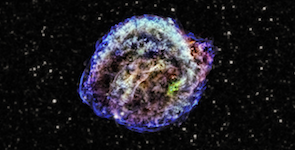Galactic SNe Remnants: Exploring an unexploited treasure

The goal of the proposed research, lead by Dr. Ioanna Leonidaki, is to perform a multi-wavelength study of the Galactic Supernova Remnant (SNR) population. SNRs in the Milky Way are an ideal laboratory for probing their evolution and their interaction with their ambient medium because, thanks to their proximity, their structures can be observed in parsec scales. Although we have a census of SNRs in the radio band (294 SNRs have been recorded to exist in our Galaxy; Green 2014), no study has been conducted so far to investigate the multi-wavelength properties of Galactic SNRs as a population, which is the only way to investigate their evolutionary trends. The vast majority of the published studies focus mainly on the physical processes and physics of selected regions in individual objects, overcoming the global properties of the sources that would allow a study of SNRs as a population. This is demonstrated by the fact that almost all of the SNR detections have been occurred in the radio band, and very surprisingly, only ~25% of them has been observed in the optical. Therefore, we propose a systematic survey of all Galactic SNRs in the optical band which, together with other multi-wavelength data, will create the first complete multi-wavelength atlas. Only then we will be in the position to explore our nearest SNRs as a population and investigate their evolutionary trail.
The main objectives of the proposed project are:
- Probe the evolution of SNRs
- Investigate how SNRs energize the Interstellar Medium (ISM feedback)
- Remedy the inherent biases of extragalactic SNR surveys
- Probe cosmic-ray acceleration and to what extend it depends on the age, the shock structure and
the surrounding material of SNRs.
